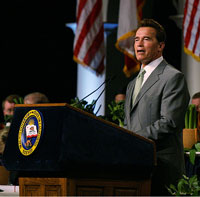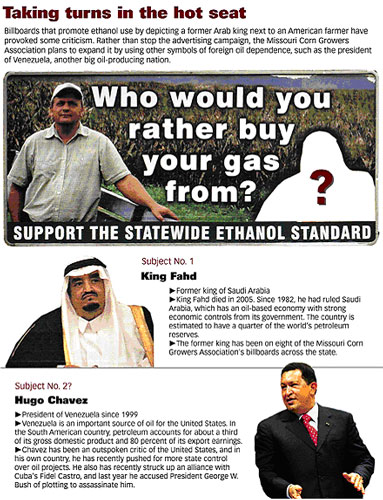President Bush today came out in support of at least a temporary end to the tariff on ethanol imports, putting the “pro-ethanol” president at odds with the ethanol industry and farm-state lawmakers. In an interview with CNBC, Bush said, “I think it makes sense to — when there’s a time of shortage of a product that’s needed, so that the consumers can have a reasonable price, it seems to me to make sense to address those shortages, and dropping a tariff will enable the foreign export of ethanol into our markets, which will particularly help on our coasts. And yeah, I’ve talked to Congress about that.”
However, the ethanol industry contends that there are sufficient supplies of ethanol to meet the demand and that dropping the tariff will have no impact on prices. According to the Renewable Fuels Association:
The Energy Information Administration (EIA) estimates that 130,000 barrels per day (b/d) of ethanol will be needed to replace the volume of MTBE refiners have chosen to remove from the gasoline pool. The most recent EIA report shows that U.S. ethanol production has soared to 302,000 b/d in February.
In addition, there have been reports that Brazil is having trouble meeting its own demand for ethanol. A recent Knight-Ridder article said that Brazilian ethanol producers are struggling to keep up with domestic demand for ethanol, which is projected to grow by 50 percent over the next five years. Yet a 15 percent jump in prices earlier this year sparked a sharp drop in consumption. Even so, suppliers are struggling to plant enough fields of new sugar cane, from which ethanol is produced here, to keep up with the anticipated growth in demand.
 In a press release today, the American Coalition For Ethanol also outlined several reasons why suspending the tariff on ethanol will do nothing to lower gas prices. They are simply:
In a press release today, the American Coalition For Ethanol also outlined several reasons why suspending the tariff on ethanol will do nothing to lower gas prices. They are simply:

 The next time I get to post will probably be from the road somewhere between here and Phoenix for the
The next time I get to post will probably be from the road somewhere between here and Phoenix for the  To help get you fired up about the
To help get you fired up about the 


 California Gov. Arnold Schwarzenegger is directing his state agencies to fight high gas prices by expanding bio-fuels, according to a
California Gov. Arnold Schwarzenegger is directing his state agencies to fight high gas prices by expanding bio-fuels, according to a 
 Senator Charles Grassley (R-IA) and Sen. John Thune (R-SD) issued a
Senator Charles Grassley (R-IA) and Sen. John Thune (R-SD) issued a  The
The  Cellulosic ethanol and biodiesel hit the spot for a company known as
Cellulosic ethanol and biodiesel hit the spot for a company known as  The
The 